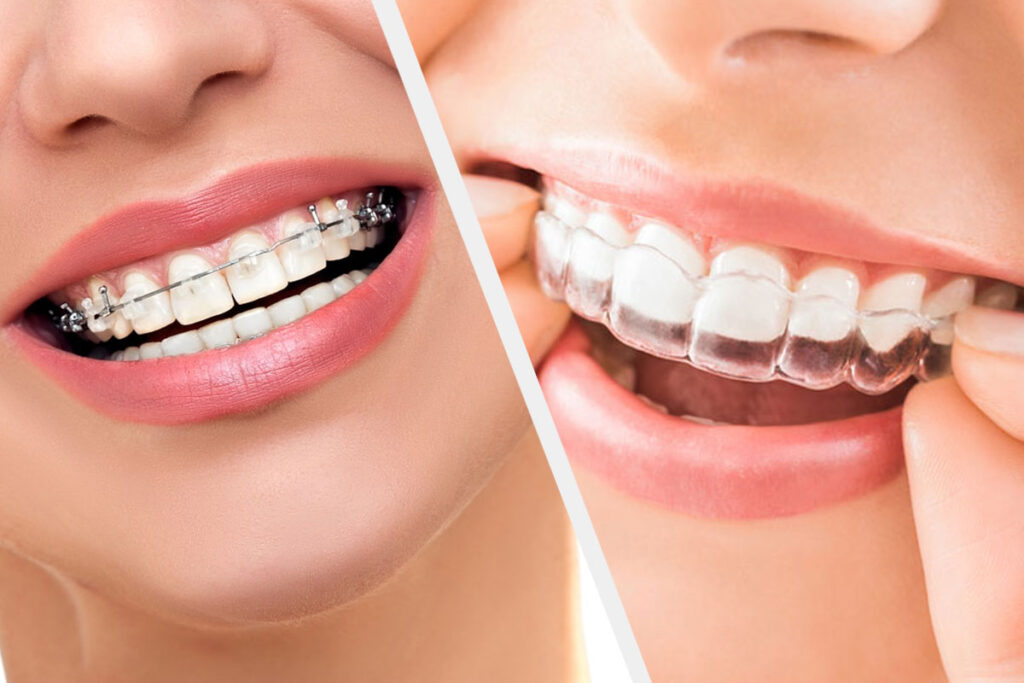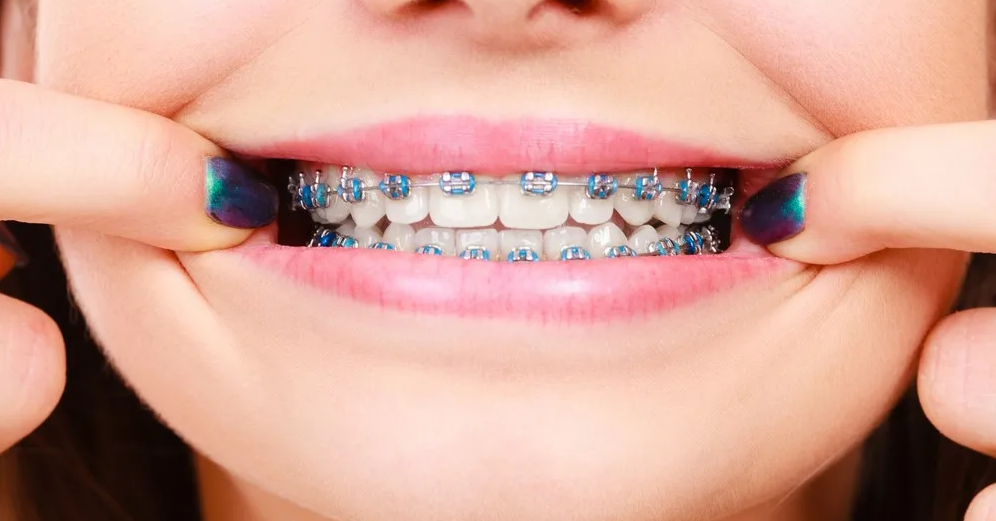With braces, it’s never as simple as needing them or not needing them. There is no ‘one size fits all’ approach — your treatment will be unique, just like the technology your orthodontist uses. Better yet, they’ll even give you options.
One popular alternative to braces is clear aligners, the transparent correction system known for being non-invasive and versatile. But when you’re weighing up the options, there are a few factors to consider.
Here, we break down the key facts and comparisons about braces and clear aligners to help you make the right choice.
One big draw card for clear aligners like Invisalign®, Spark® and 3M Clarity is that you can take them out. Braces are fixed into your mouth with brackets bonded to your teeth. This set-and-forget method is great for those who don’t want to have to worry about removing and losing expensive equipment, but it doesn’t offer the same freedoms.
Those with clear aligners often cite being able to eat without equipment in their mouths as a key reason for choosing them.

Another plus in the braces column is how effective they are. Because they’re fixed into your mouth, they’re working harder to provide you with a perfect smile.
The trade-off of Clear Aligners and the flexibility they afford is that, with every small amount of time (around two hours a day at a minimum) they’re out of your mouth, your treatment is delayed. Because of this, braces may work faster than clear aligners, but this will vary for each person.
Ultimately, the speed of your treatment comes down to your teeth and the types of corrections that need to be made, rather than the appliance itself. Many clear aligner brands advertise having shorter treatment times, however it’s important to note most treatments done by clear aligners are also simpler, easier cases, therefore it is not a fair comparison to traditional braces which are often used to treat harder, more difficult cases.
There are many different kinds of braces, and many different brands of clear aligners, so prices of each will vary. But generally speaking, for similar malocclusion, clear aligners tend to be slightly more expensive than traditional braces.
Therefore, the final cost will depend on a number of factors, primarily the duration of your treatment and how well you are able to take care of your braces or aligners.
Braces have been a mainstay of dental treatment for so long because they’re the most powerful correction treatment. For gaps big and small, and no matter what degree of malocclusion or crowding you have, braces are guaranteed to give you a winning smile.
You also have many options. From lingual braces, to ceramic braces, to the traditional metal braces, you can tailor your treatment to your own budget, tastes and needs.
Braces are also a better option for those who want a less hands-on approach. You don’t have to remove your braces when eating, meaning there’s less chance you to forget about, misplace, or break them like aligners.
Clear aligners offer some of the least intrusive treatment possible. You’ll still have them in for the majority of the day, but the option to take them out while out for dinner is freeing — especially to those in the initial stages of treatment.
Having less parts, clear aligners also means less complications. Braces can break, wires can poke, braces can cause irritation to cheek, lips and tongue, which can lead to cuts and ulcers.
Having a mouth free of wires and brackets also makes general care easier. You still have to brush and floss often with clear aligners, but you won’t have to navigate the small parts when doing so.

There are cases where people get clear aligners and decide they’re not right for them. Perhaps they don’t like the need to remove aligners every time they eat or feel that they are not disciplined enough to wear aligners minimum 22 hours per day.
Whatever the case, you will be able to switch from clear aligners to braces. You’ll need to consult your orthodontist, who will advise on the trade-off. A big factor to consider is price — in some situations there will still be clear aligner treatment to pay for, and you’ll also have to pay for the full price of the braces.
When it comes to braces and clear aligners, ‘better’ is subjective. Each patient will have their own wants, needs, and preferences. Braces are great for those who want maintenance taken care of and might be the only option for those with severe malocclusion. Clear aligners offer flexibility and the ability to spend a couple of hours each day without equipment in your mouth, but they need a lot more care and only suit a patient dedicated to abiding by treatment best-practice and willing to adopt new habits.
Whichever side you fall on, the only way forward is to contact your local orthodontist. During a simple consultation, they’ll assess your situation and plan a path to your perfect smile with all the facts clearly laid
Need More Information?
The best place to start is by getting in touch with your local orthodontist using our finder. They’ll be happy to give personalised advice on any of the above topics.
For more on braces, read about how to care for them, how to survive special occasions wearing them, and our five life hacks for living with them.











You can not believe how much my patients want to treat minor dental problems with clear aligners. This is great